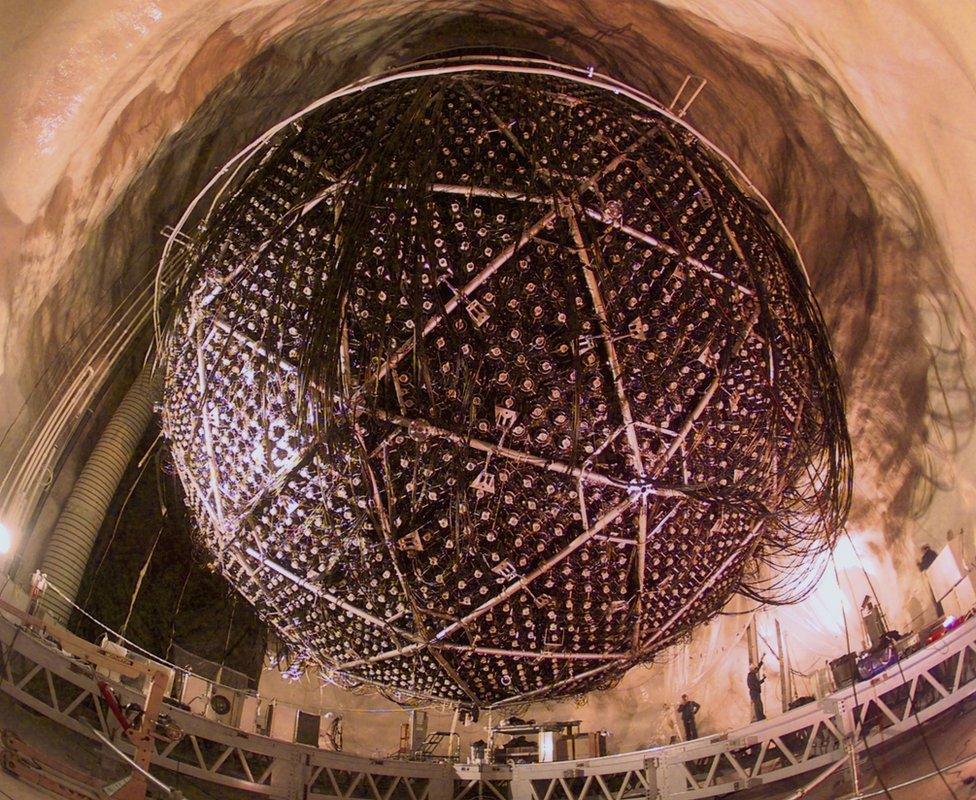Technology
New Study Advances Understanding of Neutrino Properties Through Combined U.S. and Japan Experiments
Gaudencio Roxas
06 Nov, 2025

Neutrinos, subatomic particles that rarely interact with matter and pass unnoticed through everything, remain one of the most enigmatic components of the universe. A recent collaborative analysis of data from two leading neutrino experiments in the United States and Japan offers a significant leap forward in understanding these elusive particles.
Produced in cosmic phenomena such as the sun’s core and supernovae, neutrinos exist in three distinct "flavors" and can transform, or oscillate, among these types as they travel. The combined study focuses on the precise measurement of the mass differences between neutrino types, a major unresolved question in particle physics.
Unlike charged particles such as protons or electrons, neutrinos are electrically neutral elementary particles, fundamental to the fabric of the cosmos. Grasping their nature could unlock profound insights into questions like why matter dominates over antimatter in the universe, the properties of dark matter and dark energy, and the processes within exploding stars.
The collaborative research integrated results from the NOvA experiment, which sends neutrino beams 500 miles underground from Fermi National Accelerator Laboratory near Chicago to a detector in Minnesota, and the T2K experiment, which directs neutrinos 185 miles through Earth’s crust in Japan, from Tokai to Kamioka.
While differing in neutrino energies, baseline distances, and detector designs, both projects study neutrino oscillations. By pooling nearly a decade’s worth of data, the teams achieved unprecedented precision in determining the small mass gap between two of the three neutrino types, with under 2% uncertainty.
"Initially, there were concerns about whether T2K and NOvA results could be reconciled, but we found them to be highly consistent," said Kendall Mahn, a physicist at Michigan State University and co-spokesperson for the T2K collaboration.
Despite these advances, identifying which neutrino is the lightest remains a goal yet to be reached, known in the field as the "neutrino mass ordering." This determination holds significant implications for theoretical physics.
In addition, the experiments are exploring potential differences in oscillation behaviors between neutrinos and their antimatter counterparts, antineutrinos. Understanding any discrepancies could explain why the universe contains more matter than antimatter, a fundamental mystery since the Big Bang when equal amounts of both were expected to annihilate one another.
"Deciphering such profound cosmic questions demands extreme precision and large data volumes," noted Zoya Vallari, an Ohio State University physicist and NOvA scientist. She emphasized that future neutrino facilities like the DUNE project in the U.S. and Hyper-Kamiokande in Japan are being developed to meet these needs.
Other notable international efforts include China’s JUNO experiment and neutrino observatories like KM3NeT and IceCube, which capture neutrinos originating from outer space.
"Neutrinos possess unique characteristics, and our understanding continues to evolve," Mahn concluded, highlighting the exciting frontier neutrino research represents for unraveling the universe’s deepest secrets.
Recommended For You

OCD-NIR Orders Preemptive Evacuation Near Ibid Creek Amid Flood Risks
Nov 06, 2025
Lorenza Manguera

Ombudsman Launches Investigation Into COA Commissioner Over Spouse’s Government Contracts
Nov 06, 2025
Consolacion Javellana

DSWD-Davao Disburses PHP700,000 in Stipends to Youth Interns, Expands Skills Training Initiatives
Nov 06, 2025
Lorenza Manguera

Community-Based Monitoring System Enhances Disaster Preparedness in Local Governments
Nov 06, 2025
Soledad Evangelista
